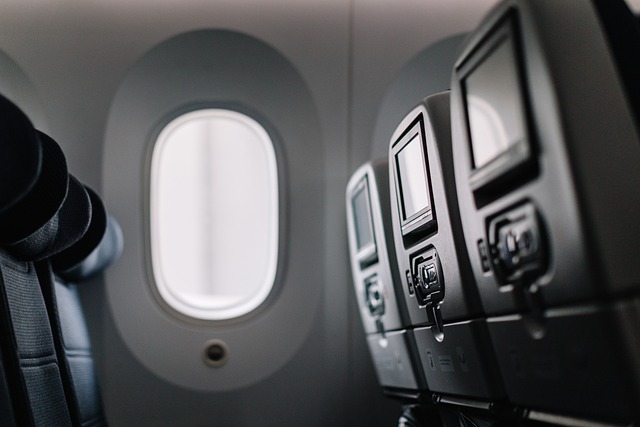Read tips for choosing sleeper train experiences for seniors
Sleeper trains offer a unique way for seniors to travel long distances while enjoying comfort and scenic views. These journeys combine the romance of rail travel with practical amenities designed for restful overnight trips. Whether you're planning a cross-country adventure or exploring regional routes, understanding what makes a sleeper train experience suitable for older travelers can transform your journey into a memorable and comfortable experience.

Comfortable cabin options for a restful journey
When selecting a sleeper train experience, the type of cabin you choose significantly impacts your comfort level. Most sleeper trains offer several accommodation classes, ranging from shared compartments to private suites. For seniors, private cabins with en-suite facilities provide the most convenience and privacy. Look for options that include lower berths, as climbing to upper bunks can be challenging. Many modern sleeper trains feature accessible cabins with wider doorways, grab bars, and emergency call buttons. Roomettes typically accommodate one or two passengers and include fold-down beds, while bedroom suites offer more space with separate seating areas. Some premium services provide deluxe accommodations with full-size beds, personal climate control, and enhanced soundproofing for undisturbed rest.
Essential travel amenities for seniors
The amenities available on sleeper trains vary considerably between operators and routes. Priority features for senior travelers include accessible restrooms with handrails, dining cars or in-cabin meal service, and climate-controlled environments. Many sleeper trains provide complimentary bedding, towels, and toiletries, eliminating the need to pack bulky items. Electrical outlets and USB charging ports are increasingly standard, allowing you to keep medical devices and communication tools powered throughout your journey. Some services offer onboard medical assistance or staff trained in basic first aid. Wi-Fi availability varies, with some routes offering connectivity in common areas or select cabins. Consider trains with observation cars or lounge areas where you can socialize and enjoy panoramic views during daylight hours. Wheelchair accessibility, assistance with luggage, and priority boarding options are valuable services that enhance the travel experience for seniors with mobility considerations.
Tips for maximizing comfort on sleeper trains
Preparing properly can significantly enhance your sleeper train experience. Pack a small carry-on bag with essentials like medications, glasses, reading materials, and a change of clothes easily accessible in your cabin. Bring layers of clothing, as temperatures can fluctuate between cabins and common areas. Comfortable, slip-on shoes make moving through narrow corridors easier and safer. Request lower berths when booking to avoid climbing, and inquire about cabins located near dining cars or restrooms if mobility is a concern. Arrive at the station early to allow time for boarding without rushing, and familiarize yourself with your cabin’s features and safety equipment upon arrival. Staying hydrated is important, so bring a refillable water bottle or request water from attendants. If you have dietary restrictions or medical needs, notify the train operator in advance to ensure appropriate accommodations. Consider booking cabins away from wheel assemblies or coupling points to minimize noise and vibration.
Considerations for a smooth travel experience
Several practical factors contribute to a successful sleeper train journey for seniors. Route selection matters—shorter overnight trips of 8-12 hours may be more comfortable than multi-day journeys for first-time sleeper train travelers. Research departure and arrival times to avoid late-night station transfers or early morning connections that might be stressful. Understand the luggage policies, as space in sleeper cabins is limited, and ensure you can manage your bags or arrange porter assistance. Travel insurance that covers trip interruptions, medical emergencies, and cancellations provides peace of mind. Check whether your chosen route operates year-round or seasonally, as availability may affect your travel plans. Consider traveling with a companion if you have concerns about managing independently, as many cabins accommodate two passengers comfortably. Review cancellation and modification policies carefully, as flexibility becomes more important when health or weather conditions might affect travel plans.
Expert advice for planning your trip
Experienced travelers recommend booking sleeper train tickets well in advance, particularly for popular routes and peak travel seasons. Spring and fall often provide pleasant weather and fewer crowds compared to summer months. Join loyalty programs or senior discount schemes offered by rail operators to access reduced fares and priority services. Consult with travel agents who specialize in rail journeys, as they can provide insights into the best routes, cabin types, and seasonal considerations. Read recent reviews from other senior travelers to understand current service quality and identify potential issues. Consider combining sleeper train travel with hotel stays at either end of your journey to allow for rest and adjustment, particularly for longer trips. Verify visa requirements, border crossing procedures, and any health documentation needed for international routes. Create a detailed itinerary with emergency contacts, medication lists, and copies of important documents shared with family members. Many rail operators offer virtual tours or detailed cabin descriptions on their websites, helping you make informed decisions before booking.
Conclusion
Sleeper train travel offers seniors a distinctive and comfortable alternative to flying or driving for long-distance journeys. By carefully selecting cabin types, understanding available amenities, and preparing thoughtfully, older travelers can enjoy scenic routes while resting comfortably overnight. The key to a successful experience lies in matching your specific needs and preferences with the right train service, route, and accommodation level. With proper planning and realistic expectations, sleeper trains provide a relaxing and memorable way to explore new destinations while minimizing the physical demands of travel.


